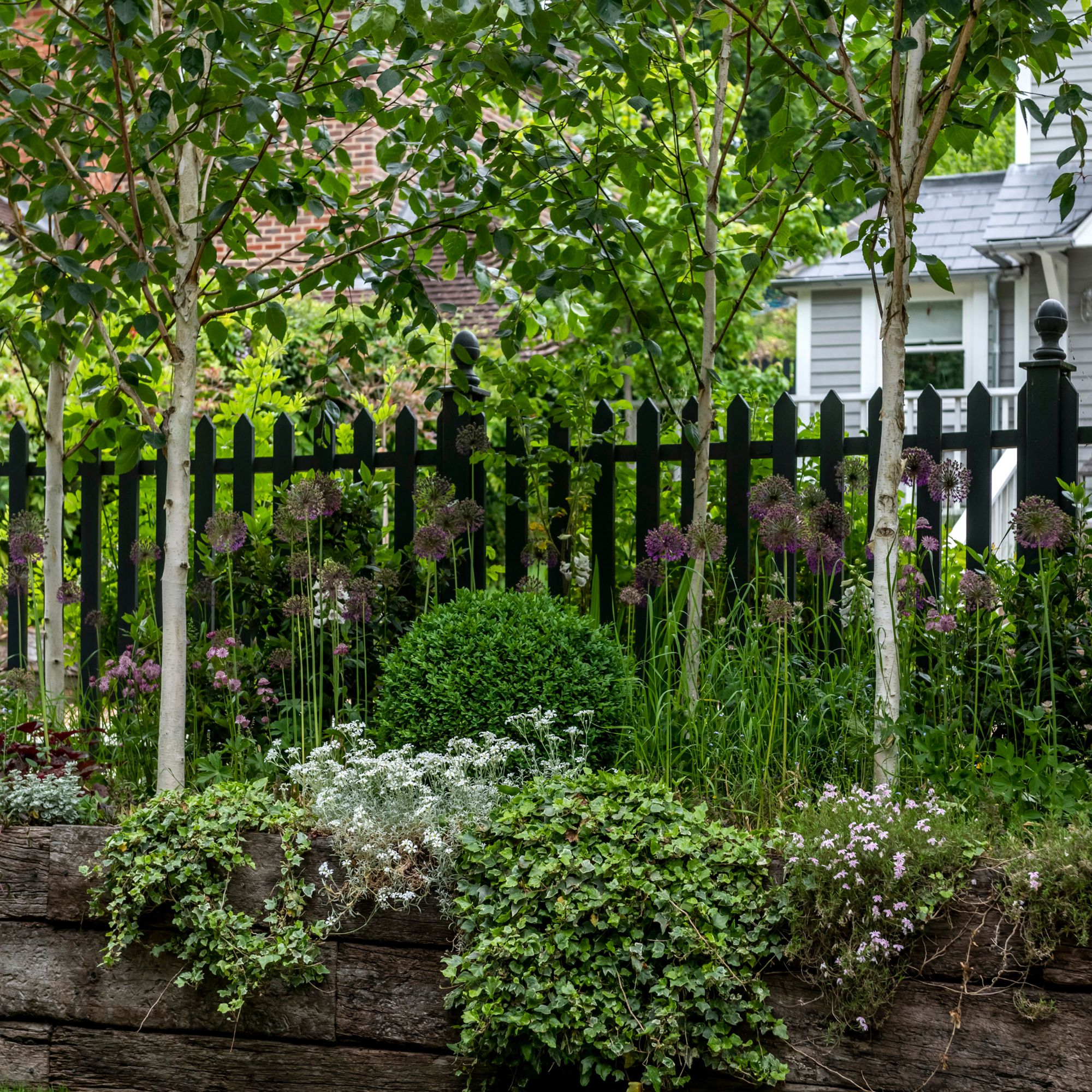
If you've been researching the best trees to plant close to a house and which ones to avoid, you're not alone; a little slice of nature right outside your window, adding shade in summer (and colour in autumn) sounds positively dreamy... but only if you do it properly.
That's right: whether you've been researching the best trees for small gardens or have visions of a towering oak or fluffy blossom, it's always a good idea to pause for a reality check. Because some trees? Well, they’re basically homewreckers in disguise.
Yes, while the right tree can boost your kerb appeal, increase your property’s value, and even help with energy efficiency, the wrong one could leave you battling invasive roots, crumbling driveways, and blocked drains. Which, trust us, is even less fun than it sounds...
Best trees to plant close to a house
From privacy trees to wildlife garden must-haves, these are the trees that experts agree you should be rolling out the welcome mat for...
1. Japanese maple
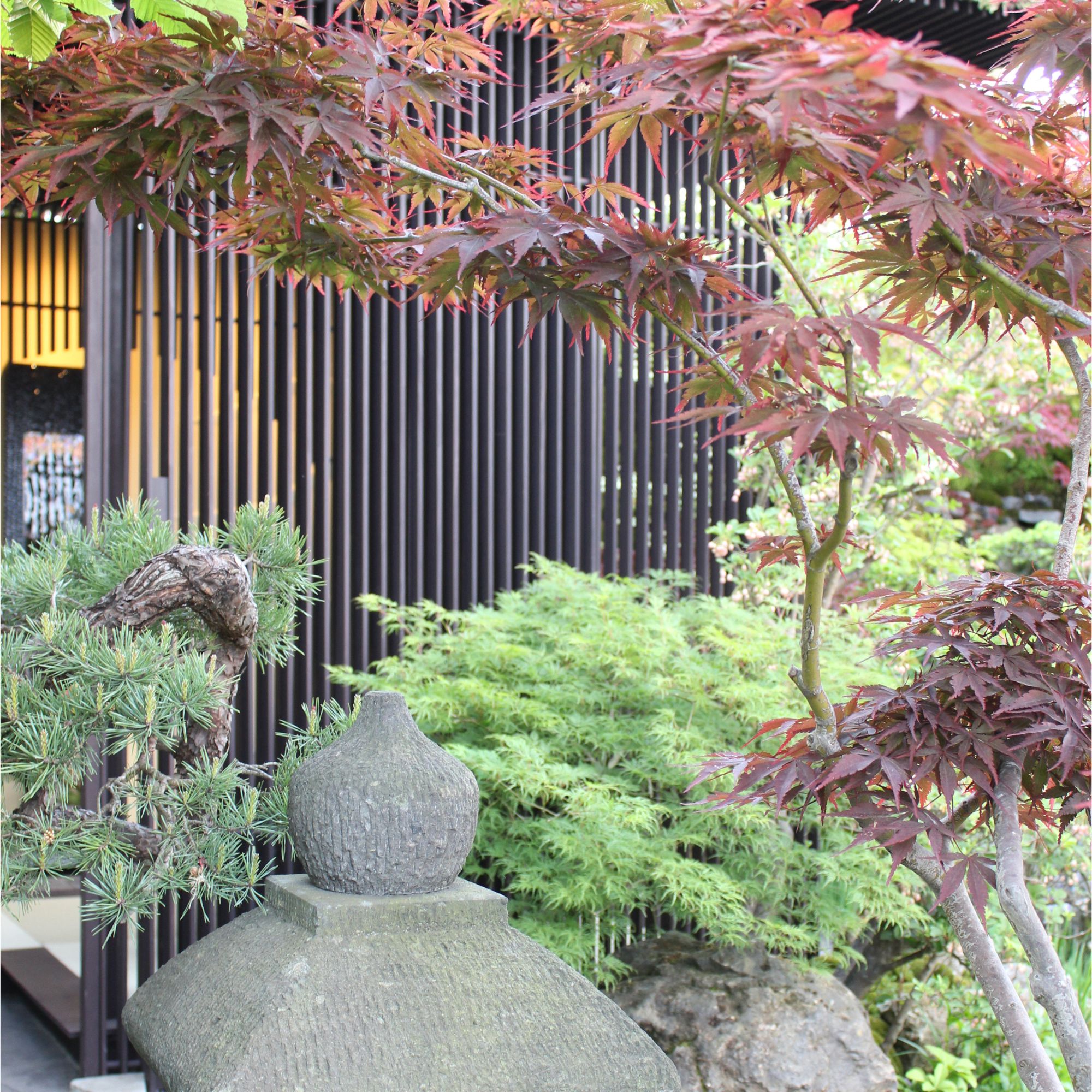
One of the best trees to plant close to a house is also one of the prettiest: the Japanese maple!
'These are small to medium tress with stunning foliage in many different colours from red to orange that really come into their own during autumn time,' says Morris Hankinson, director of Hopes Grove Nurseries.
'They have a shallow root system which means they won’t cause any damage when planted near to a house or any building,' he adds, noting that you should plant at least 3m away from the house to allow your Japanese maple plenty of space to grow.
Try something like the vibrant Acer palmatum from Crocus to add a serious pop of colour to your garden.
2. Amelanchier
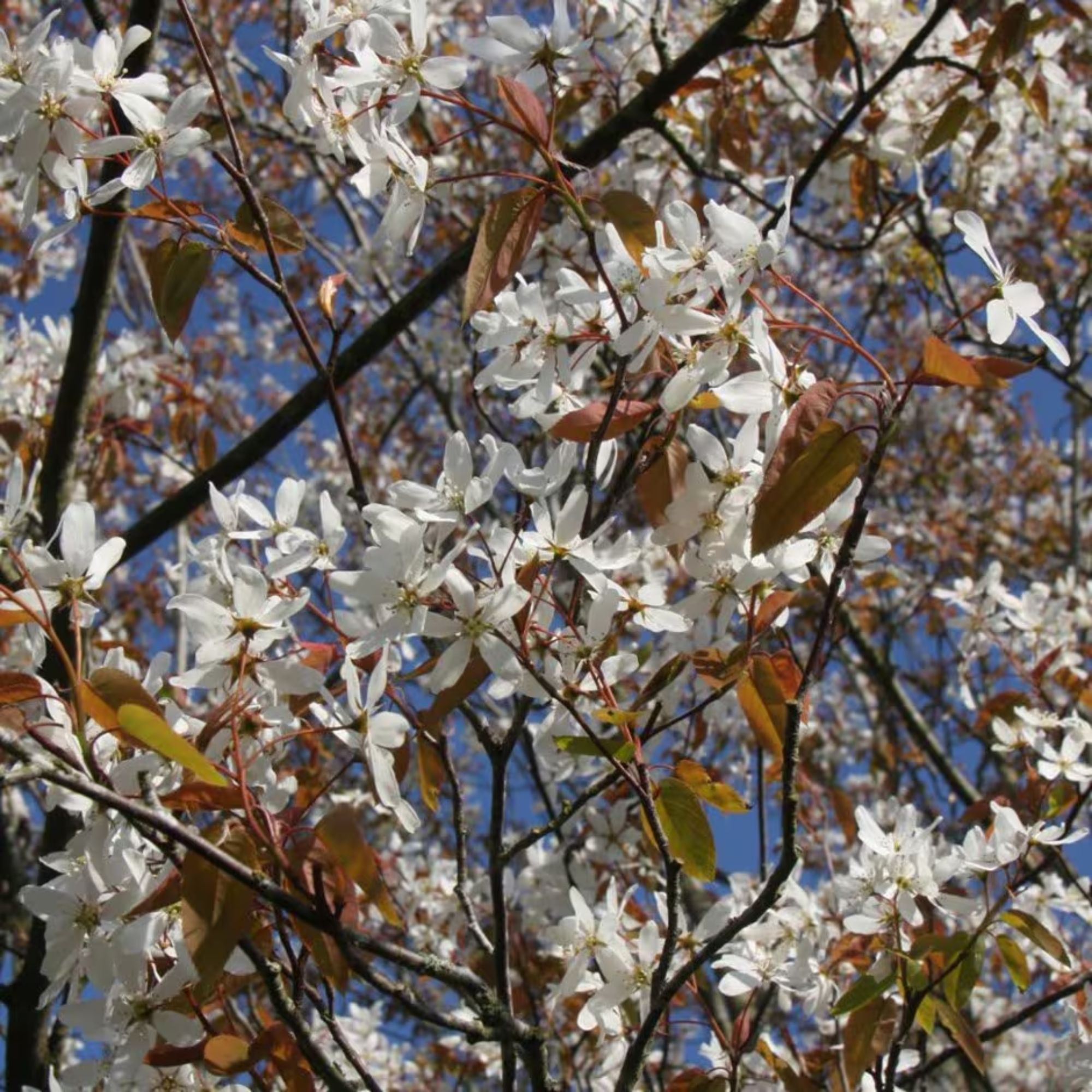
Promising several seasons of interest throughout the year, the amelanchier is also considered to be one of the very best trees to plant close to a house.
'This small to medium-sized tree is great for smaller gardens, and the roots are not overly aggressive, making it safe to plant near structures,' says Steven Bell of Ethan Mason Paving.
With attractive spring flowers followed by edible berries in summer, Steven adds that this pretty tree 'tolerates a wide range of soil conditions and is drought-tolerant once established'.
Try planting something, then, like the amelanchier laevis 'Snowflakes' from Crocus if you want some bang for your buck.
3. Crab apple
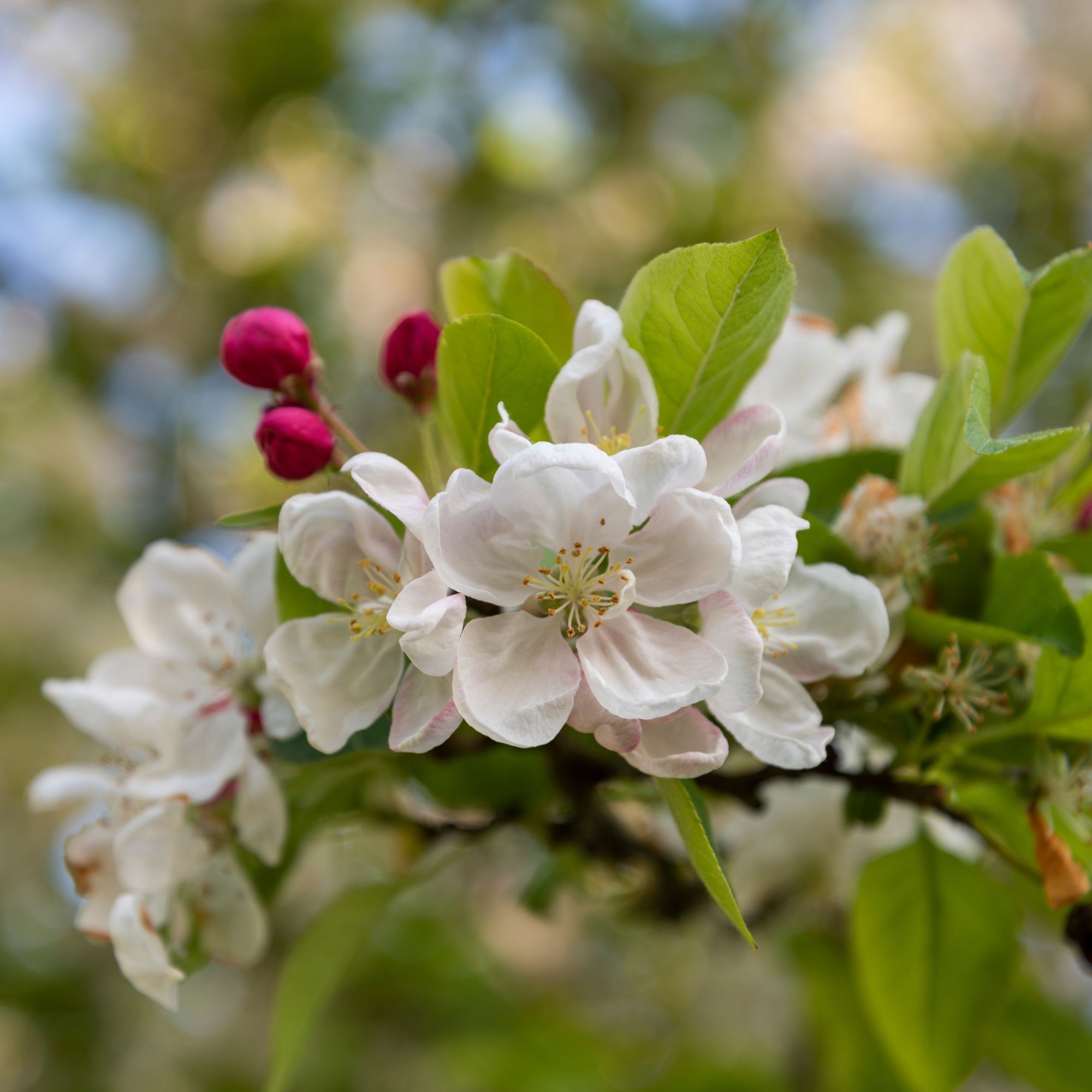
The not-so-humble crab apple pops up a lot in our planting guides, and little wonder; they are one of the easiest fruit trees to grow and one of the best trees to plant close to a house.
'They are all year round interest from flowers to fruit and stunning foliage in autumn,' says Morris. 'Being small to medium in size with non invasive roots, these can be planted at least 3m from a house.'
There are plenty of different crab apple varieties on Crocus, so you can definitely find the one to suit your needs.
4. Flowering dogwood
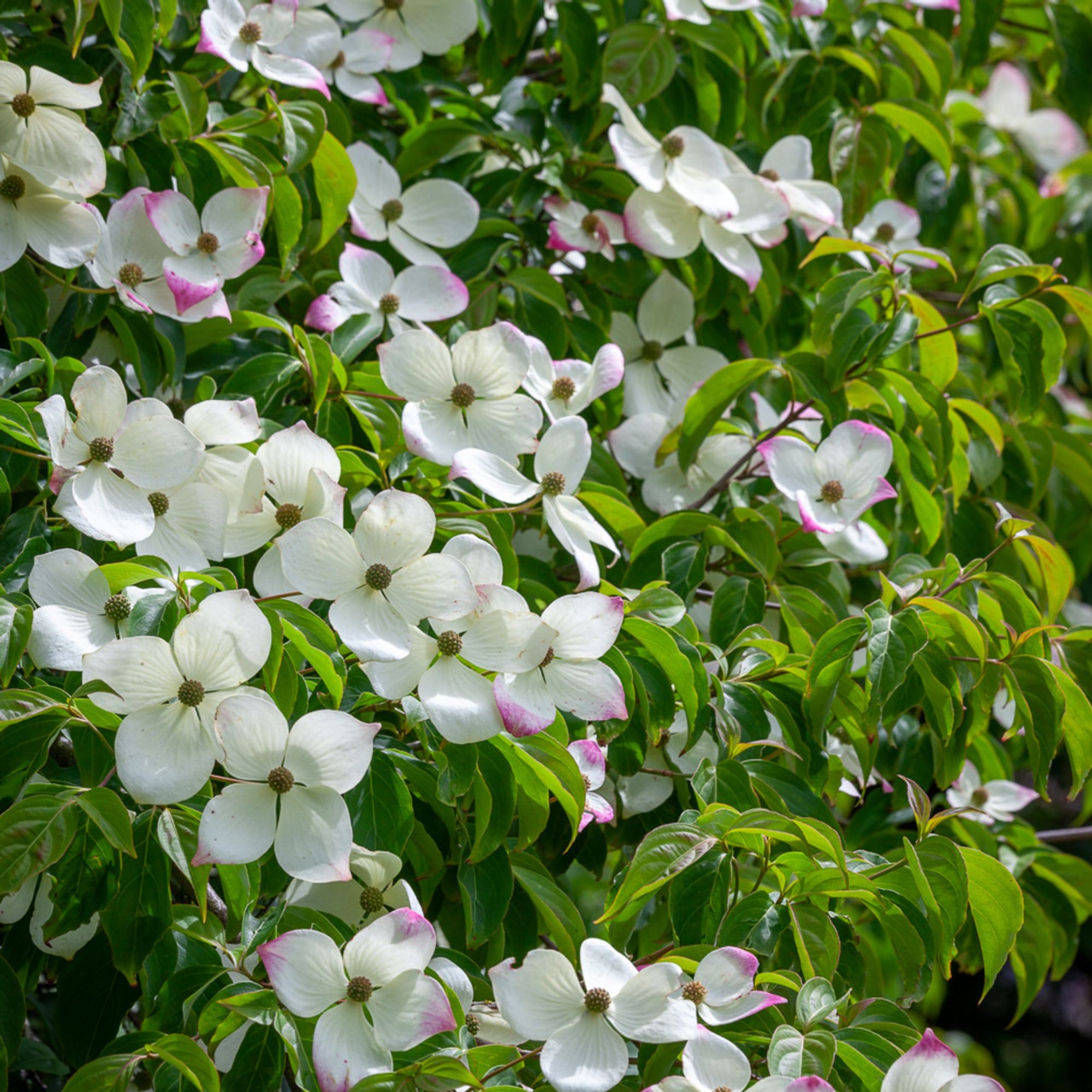
Perfect for the smaller garden, flowering dogwoods (like this one from Sarah Raven) boast beautiful white blooms in the springtime – making them one of the prettiest trees to plant close to a house, as well as one of the best.
'These are compact trees that typically grow to around 5-7m tall, and they'll turn heads with their striking spring blooms and autumn colour,' says Steven.
'Best of all, they have shallow roots that won’t interfere with building foundations... but they do need well-drained, slightly acidic soil to thrive.'
5. Redbud
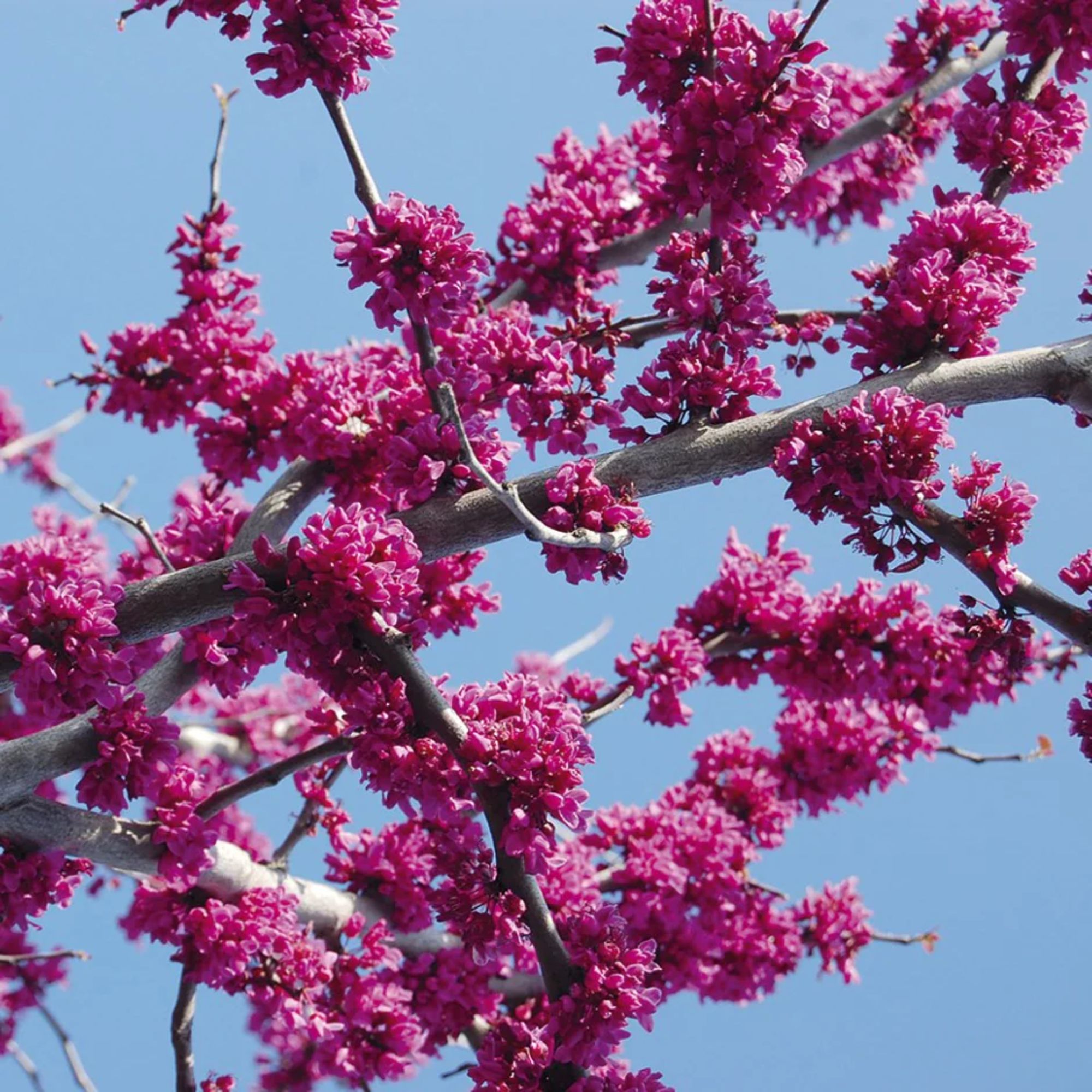
Finally, something like a redbud with its dark wine-red blooms (like this Texas eastern redbud 'Oklahoma' from Crocus) would also be a great tree to plant close to a house.
'Redbuds are captivating trees with bright pink flowers in spring which grow before the foliage,' says Morris.
'These grow to a medium size with non aggressive roots so they can be planted at least 3m away from a house.'
Trees to avoid planting close to a house
It's all well and good knowing the best trees to plant close to a house, but you also need to know which ones you should be avoiding like... well, if not the plague, then that one neighbour who always wants to 'borrow' your garden tools.
To that end, then...
- Willow: 'Willows are well known to grow really big and have huge root systems, and will spread to find water which can damage home foundations and pipes,' warns Morris.
- Oak: 'Oak trees can grow very large, which can be problematic near a house, and they have a deep and far-reaching root system that could interfere with foundations and underground services,' notes Steven.
- Poplar: 'These are such majestic trees, but in a smaller garden, or near a house they can cause damage to drainage, foundations and pipes due to the extensive root system,' says Morris.
- Norway maple: 'Known for its aggressive root system, which can damage foundations, drains, and pavements,' says Steven, who adds that these trees also produce a large amount of sap, which can stain patios or driveways.
- Eucalyptus: 'These are stunning, and the foliage is great for floral displays, but the roots will seed out water which can cause problems,' says Morris of these incredibly thirsty trees.
FAQs
What is the safest tree to plant near a house?
The Japanese maple is widely considered to be the safest tree to plant near a house, as well as one of the prettiest.
'They're a compact size, making them ideal for smaller spaces, and their shallow root system that reduces the risk of damaging foundations,' says Steven Bell of Ethan Mason Paving.
Steven adds that, while their beautiful foliage provides interest year-round, Japanese maples also tolerate partial shade well. 'This makes them more than suitable for planting in various locations around a house,' he finishes.
Which trees should not be planted near houses?
There are several trees which should not be planted near a house, including Norway maples, willows, horse chestnut trees, oaks, poplar trees, and eucalyptus.
This is largely due to their invasive root systems, which can cause untold damage to buildings and other structures.
Is it OK to plant a tree next to a house?
It is OK to plant a tree next to a house, according to gardening expert Steven Bell, so long as you take some time to do your research first and keep the following considerations in mind:
- Root system: 'Opt for trees with non-invasive, shallow roots that won’t interfere with foundations, driveways, or underground utilities.'
- Size and spread: 'Be mindful of the eventual height and canopy spread of the tree. Trees that grow too large may block sunlight or interfere with the structure.'
- Maintenance: 'Choose trees that won’t require excessive pruning or cleaning up of debris.'
- Growth rate: 'Fast-growing trees may need more maintenance and have a greater likelihood of root problems as they mature.'
Now that you know the best trees to plant close to a house and which ones to avoid, all that's left for you to do is decide which one has stolen your heart.
Have fun deciding...







